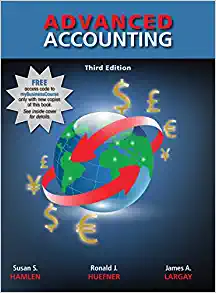On June 25, 2016, Reno Company, a U.S. firm, will be taking out a 10,000,000 loan, due
Question:
On June 25, 2016, Reno Company, a U.S. firm, will be taking out a 10,000,000 loan, due in three years and carrying an annual interest rate of LIBOR + 80 bp. In anticipation of the loan, a spot rate of \($1.60/\) and LIBOR of 2 percent, Reno negotiates a currency swap and interest rate swap with Sterling Benteen, Ltd. (SB), a British firm. SB recently negotiated a fixed-rate dollar denominated loan. Proceeds from both loans will be converted into the home currency and used to finance projects in each company's home country. The two counterparties propose the following:
1. On June 25, 2016, Reno will receive 10,000,000 from SB in exchange for \($16,000,000. \)
2. On June 24, 2019, Reno will receive \($16,000,000\) from SB in exchange for 10,000,000.
3. On June 24, 2017, 2018 and 2019, SB will pay Reno \($480,000\) (fixed at 3 percent annually) in ex- change for sufficient to cover the annual interest on Reno's 10,000,000 floating rate loan. Despite hours of staff work and pages of elegant analysis, you sense that there is something seriously wrong with this "deal."
Required
a. What is wrong with the above arrangements? Recast them into swaps sensible for Reno and SB.
b. After you recast the arrangements into sensible swaps, suppose throughout the year ended June 24, 2019, LIBOR is 3 percent and the spot rate is \($1.50.\) For that year only, calculate the undiscounted number of dollars that Reno saved (lost) by entering these swaps as opposed to not entering them.
Step by Step Answer:






